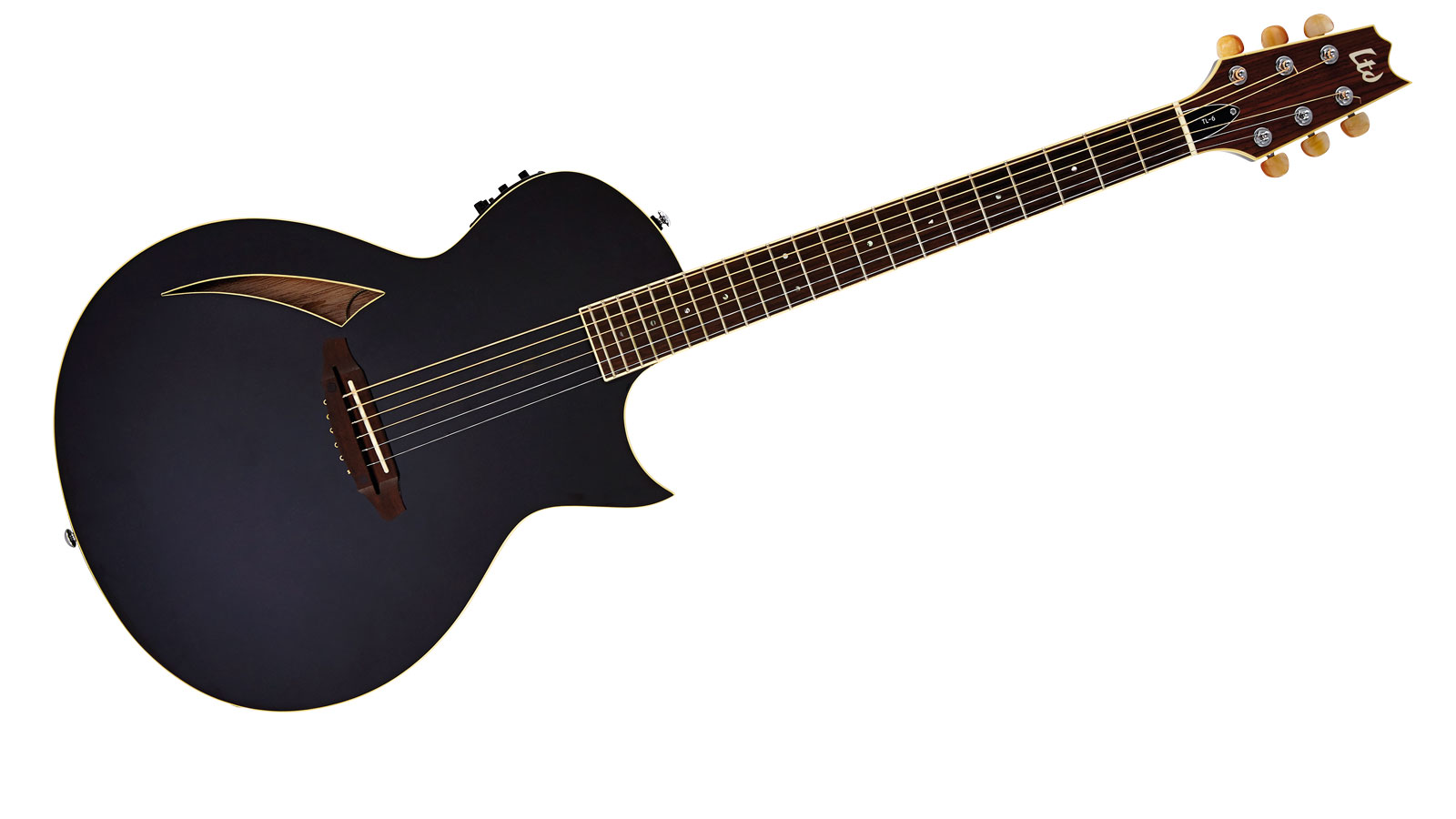MusicRadar Verdict
At this price, the TL-6 could not only be an ideal onstage electro for loud scenarios but also a source of left-field, treated 'acoustic' tones.
Pros
- +
Low feedback. Very good value for money. Plays like a rock guitar.
Cons
- -
Lack of low end. A little hiss.
MusicRadar's got your back
ESP's affordable LTD range is known for its rock and metal-friendly guitars, less so acoustics.
Although the brand unveiled a new line of traditional acoustic boxes at this year's NAMM gear-fest, at the end of 2014, it took the wraps off a more innovative three-guitar TL (as in thinline) range: a steel-string, nylon-string and 12-string.
We say 'innovative', but the thinline electro-acoustic is hardly new. However, in today's over- stocked market, the genre is pretty rare and often high-end in price. So, what's the attraction?
"This isn't a standard feedback-friendly acoustic; it's a stage guitar that's meant to be amplified"
As any gigging acoustic player will know, getting a good amp'd acoustic sound at high volume levels - for example, when playing with a full band - can be problematic, not least with feedback caused by your acoustic's full-depth hollowbody. Throw in a loud bassist and over-noisy onstage monitors, and in some scenarios, feedback will win the day: not good.
The thinline concept reduces the amount of air within the body and, typically, adds some solid wood to join top to back: both features should reduce onstage feedback. That's the theory.
The TL-6 looks like a slightly enlarged ESP Eclipse: the back is routed out, leaving sides, a centre block under the acoustic-like bridge, and a pocket for the glued-in neck.
It's capped with a maple top, with sizeable 'slash' soundhole and bound edges. With a rock-like 'thin U' neck profile and width, the TL-6 feels more like a rock semi than a Martin D-28, but with a 350mm (13.8-inch) fingerboard radius, pretty big but nicely fettled frets and a low-ish action, any electric player is going to feel at home.
Want all the hottest music and gear news, reviews, deals, features and more, direct to your inbox? Sign up here.
Acoustically, not least because of the compromised soundbox, there's little projection: it's okay for practising and in-front-of-the-telly noodling, but little else. But that's the point: this isn't a standard feedback-friendly acoustic; it's a stage guitar that's meant to be amplified.
The onboard B-Band Electret Film under-saddle transducer, combined with the B-BandT-7Preamp-withvolume, three-band EQ, onboard tuner and phase switch - is fit for purpose.
There's a slight lack of wallop to the low E and a little too much hiss for ultra-quiet studio recording, but the EQ is sensible, the phase switch essential to tame feedback, and the overall sound is more than credible, especially mixed in with a larger band. And, by design, the TL-6 has a much higher feedback threshold than any full-depth electro-acoustic we had to hand.
This is an ideal guitar to run through your pedalboard and create acoustic-textured 'electric' sounds; its boundaries are your imagination. We can't help thinking an additional magnetic pickup version would blur the lines even more.
Dave Burrluck is one of the world’s most experienced guitar journalists, who started writing back in the '80s for International Musician and Recording World, co-founded The Guitar Magazine and has been the Gear Reviews Editor of Guitarist magazine for the past two decades. Along the way, Dave has been the sole author of The PRS Guitar Book and The Player's Guide to Guitar Maintenance as well as contributing to numerous other books on the electric guitar. Dave is an active gigging and recording musician and still finds time to make, repair and mod guitars, not least for Guitarist’s The Mod Squad.

